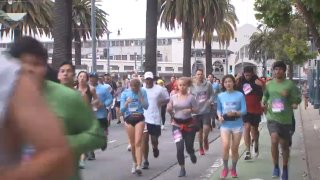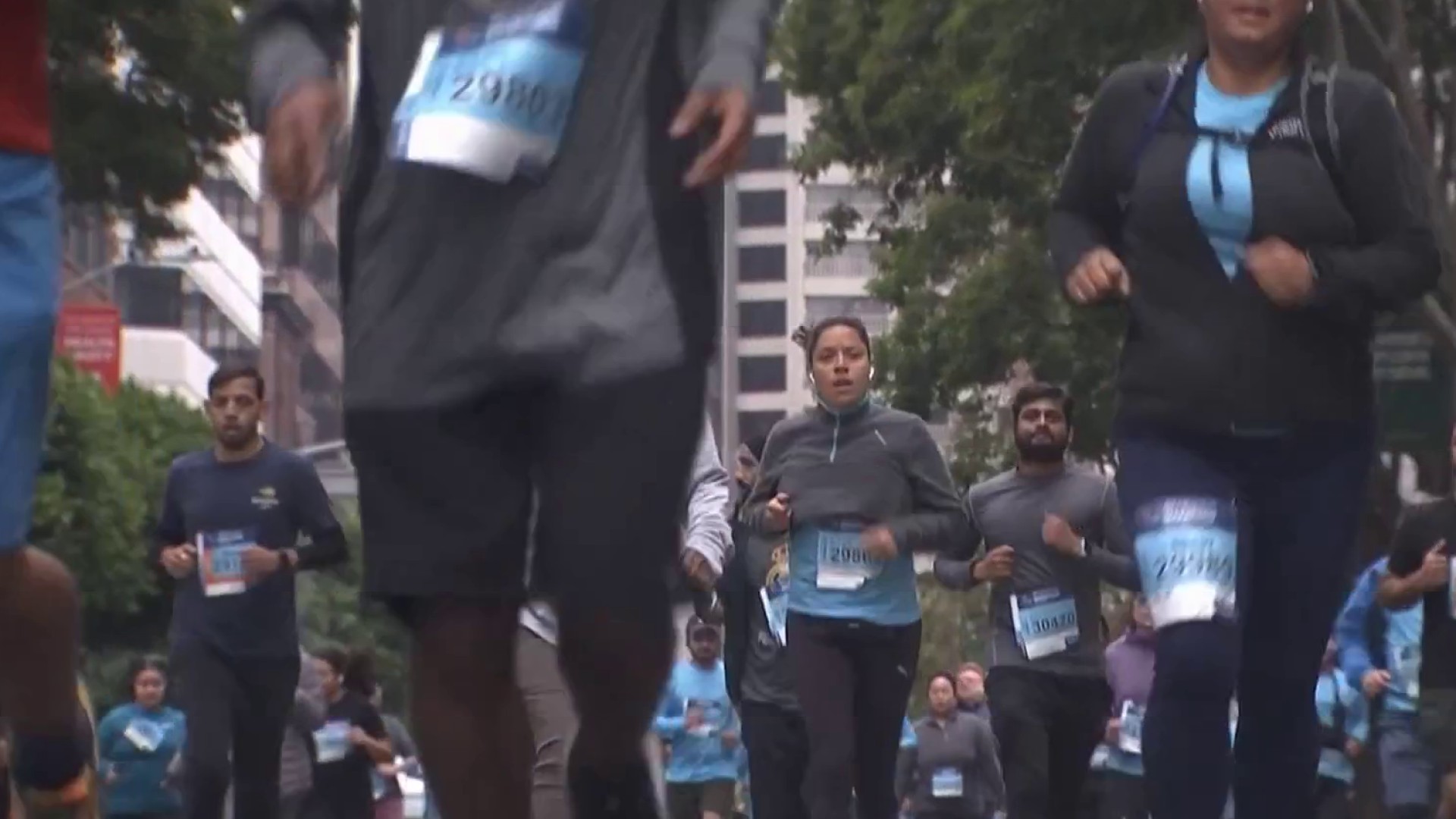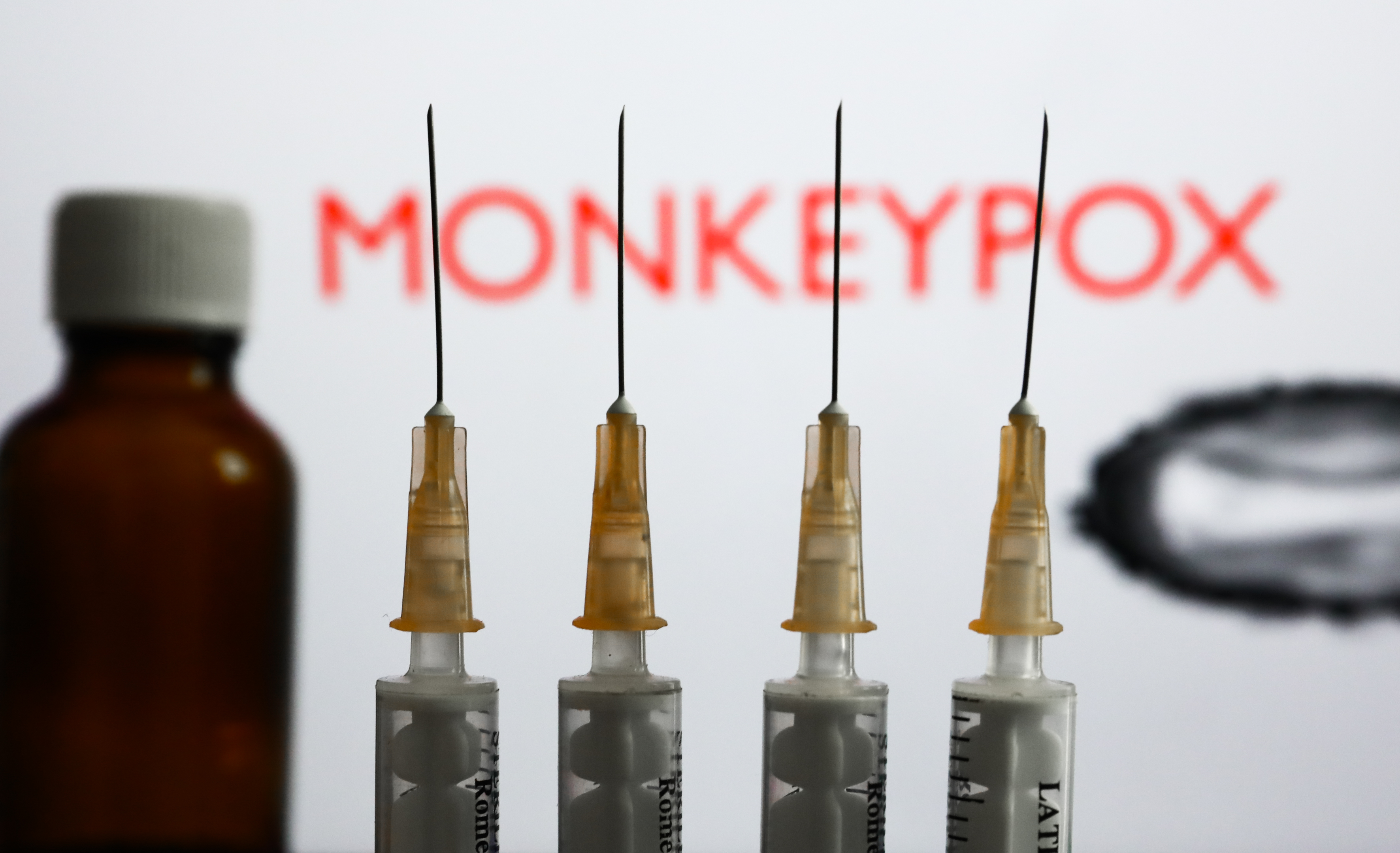
Runners scampered across the hilly streets of San Francisco in Sunday's 45th San Francisco Marathon, which organizers said was bigger, more inclusive and more accessible than ever before.
The race -- from The Embarcadero in San Francisco to Sausalito and back -- was the first marathon in California to have a separate division of nonbinary+ designated for nonbinary, bi-gender, agender, two-spirit and gender fluid participants as well as the traditional male and female divisions.
The race weekend also featured a program for participants with disabilities.
The marathon had 25,000 runners registered, including virtual participants from around the world, making it the biggest San Francisco Marathon yet.
Get a weekly recap of the latest San Francisco Bay Area housing news. Sign up for NBC Bay Area’s Housing Deconstructed newsletter.
Cal Calamia, a San Francisco-based high school teacher and advocate for nonbinary inclusion at races, won the nonbinary division of the marathon with a time of 3:00:00. Calamia was excited that marathon organizers embraced more inclusive running categories.
"A race is just a representation of society in this small little way, so if your registration options are male or female, and you don't really identify fully with either one of those things, it just reinforces the idea that who you are is somehow wrong," Calamia said. "So, to just add one more option makes a world of a difference."
Now that the marathon is over, Calamia said they hope that the decision to include a nonbinary category at the San Francisco Marathon is the beginning of systemic change at races across California and the United States.
"I'm hoping that the SF Marathon team will reach out to some other races and say, 'This is what we did, this is how we did it, these were the results and you should try it' -- that will take some of that struggle and that work off of trans and nonbinary folks," Calamia said, adding that they are also working independently to get other races to expand their categories.
"I've got my sights set on the California International Marathon, a big one out in Sacramento. They haven't been super receptive to me yet, so I'm waiting to hear from them," Calamia said.
In addition to adding the nonbinary category, San Francisco Marathon organizers also worked with sponsors to create programs for runners with disabilities and runners who have overcome adversity.
Sagirah Ahmed Norris completed the marathon and was part of the "Not Done Yet Marathon Team," including runners given a chance to complete the 26.2 miles in San Francisco after being unable to finish other full marathons.
Norris began running after her father passed away in 2016 and decided to run the Chicago Marathon. During the race, however, she began feeling pains and parts of her body going numb. After dropping out of the race, Norris began visiting doctors to figure out the problem. She was diagnosed with primary progressive multiple sclerosis.
"I was in shock," Norris said. "I wasn't even 30, I had a young family and the doctor told me that in five years I was going to be wheelchair-dependent."
Norris came up with a bucket list of things she wanted to do. On a trip to Ireland with her husband, she stumbled across a National Multiple Sclerosis Society magazine that talked about hematopoietic stem cell transplantation, an intense chemotherapy treatment that wipes out and then regrows the immune system. Norris decided to undergo the treatment. "I went into treatment with a cane, and by the end of 30 days, I walked out on my own," Norris said about the success of her treatment. "I began to think, 'If I learned to walk with physical therapy, could I learn to run again with more physical therapy?'"
This weekend, Norris traveled from Houston to run the San Francisco Marathon and to advocate for other people with MS to learn about their treatment options and try hematopoietic stem cell transplantation if it is the right treatment for them. Norris completed the marathon, along with her teammates Ashley Zirkle, who is back to running after donating her kidney to a stranger, and Mike Zampella, who has a rare degenerative eye disease.
"We added these divisions and awards to our 45th marathon because it was past time to do so," said Lauri Abrahamsen of Jumping Fences Inc., the organizing company of the marathon. "We hope that this expansion of gender divisions, and our runners with disabilities program, will inspire more people to join the running community and feel that they belong." Marathon organizers partnered with Jake Fedorowski, who serves on the board of Seattle Frontrunners, an LGBTQ running club with chapters all over the U.S.
Fedorowski created a guide for nonbinary inclusion in running from having conversations with industry experts and helping organizers of the Eugene Marathon in Oregon begin offering a nonbinary category.
"I realized I have a resource here that could be formalized and shared with race directors and people like me, nonbinary runners," Fedorowski said, and began conversations with San Francisco Marathon organizers.
The marathon took place Sunday, with people across the city and country running from The Embarcadero in San Francisco to Sausalito and back.




